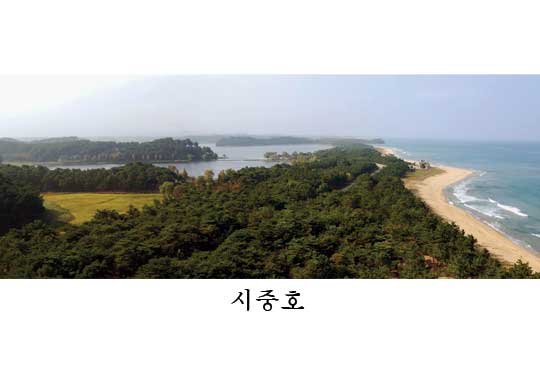National Intangible Cultural Heritage-Pelotherapy at Lagoon Sijung
Lagoon Sijung Sanatorium, situated in Thongchon County, Kangwon Province, is famous for its pelotherapy.
The bottom of the lagoon is deposited with peloid, 4-5 meters in thickness, which is used for treating various diseases at the sanatorium.
It looks dark grey and has no smell. Physicochemical components include 70% of water, 0.14% of salt, 20~21% of crystal components, over 10% of colloid, 0.02% of iron sulfide and 0.5~1.5% of miscellaneous elements. In one litre of peloid solution, total amount of minerals amounts to 2.674mg, metasilicate to 36.5mg, potassium ions and sodium ions to 723.81mg, calcium ions to 72.24mg, magnesium ions to 79.67mg, chlorine ions to 1170.03mg, vitriolic ions to 148.11mg and bicarbonate ions of 341.6mg.
The peloid is very efficacious for arthritis, liver disease, chronic cholecystitis and cholangitis, chronic gastritis, gastric and duodenal ulcer, chronic colitis, trauma and surgical sequela, nervous system disorders and gynecopathy.
The pelotherapy includes mud bath for whole body or certain parts of body and can be combined with electrotherapy, ultrasonic therapy or phototherapy, if needed. Normally, the peloid is heated to 42~50℃ but it is also used as it is. The treatment is given every day or every other day for about 20~25 minutes, and its period covers 12~15 times of treatment.
The peloid of the lagoon with high medical benefits is transported to the other sanatoriums and hospitals over the country and widely applied for the medical remedies.
The Pelotherapy at Lagoon Sijung has been registered as an element of the National Intangible Cultural Heritage.
